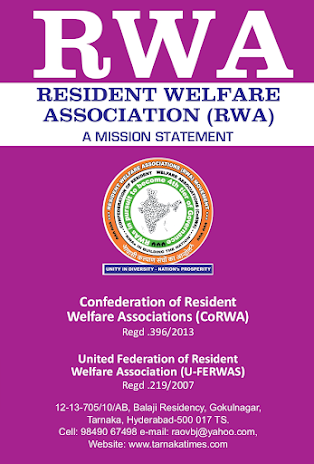We must help planners, builders, architects, vastu shastris, vastu vidwans become “pavement-literate” to guide clients to leave footpaths encroachment free
By Professor B. R. Sant*
Vastu shastra
Ancient Hindu architectural knowledge was a highly developed science more devoted to building of temples, but fairly advanced for dwellings too. Varahamira’s Brihat Samhita is perhaps the oldest Indian (Sanskrit) text that describes vastupurusamandala to plan cities and buildings including roads and pavements.
Footpaths are for pedestrians
Very many people, both rich and poor, tend to forget that pavements (also known as sidewalks) are mandated by the government to ensure pedestrians walk safely, comfortably and with dignity. For every road in residential or in non-residential locality that has vehicular traffic movement, there is a footpath on either side where alone the pedestrian must walk. What if pavements are absent, damaged, or otherwise occupied illegally (encroached)? Pedestrians will be forced to go over to roads risking injury or even death.
Footpath encroachment is a “crime”
Encroachers look for easily available benefits: empty space, gains-without-payment, no one to question, human greed, lack of ethics. Many occupy footpaths temporarily, some semi-permanently and some permanently. Many do not perhaps realise that such occupation is illegal and a “crime” in law. But pedestrians too have little or no choice because the law says they must walk only on footpaths.
“Encroachers” who “usurp” footpath-spaces are probably the biggest culprits from any angle: hardship to pedestrians, loss of footpath-spaces and huge loss to the exchequer. The lesser culprits on these counts are the most visible – hawkers/vendors, who get evicted and convicted although they occupy footpaths only for a few hours every day and do not take away spaces permanently. The usual victims of legal action too are the hapless hawkers and vendors. But what about other types of encroachers and the extent of the harm they cause?
A New Strategy vis-a-vis “pedestrian literacy”
After a careful study of the nature of encroachers and the extent of harm they cause to the pedestrians and the exchequer, the present author has developed a New Strategy in conformity with good governance practises.
FIRST deal with the Type A encroachers – residential and commercial building-owners. (for a more detailed exposition on the categories of encroachers click here)They are the ones who cause the most damage as they build decorative gardens, inclined ramps, steps, mini-parking areas, plant trees occupying almost half the pavement-spaces. They should be asked to demolish all encroachments at their own cost. They should further be told to strictly restrict all construction to the land area mentioned in ownership deeds and leave footpaths in front of their premises completely free for pedestrians.
SECOND, deal with the Type B encroachers – shop-keepers with partially visible encroachments. They must keep the pavements in front of their shops absolutely clear of anything that obstacles the pavement-walkers, not just at their feet-level but their heads and shoulders too.
THIRD and LAST the TYPE C encroachers – the hawkers and vendors who were the sole targets all these years of authorities for their clearance drives. While they too should not be allowed to occupy footpaths and pavements meant for pedestrians, largely being daily-wage earners perhaps they need to be treated compassionately and provided alternate places to do their business.
EFF and Swachh Bharat Mission (SBM) are complimentary
It is pertinent to mention here that footpaths and roads arise simultaneously from the same source and are truly “twins”, to be treated equally by the mother (read government/city civil authorities/city police) for their upkeep and traffic-regulation. At the core of any strategy, including the proposed New Strategy, is “awareness creation”, a task to be undertaken on a massive scale by all stake-holders especially urban governance agencies, NGOs, RWAs (Residential Welfare Associations), SCFs (Senior Citizens Forums). Documentary and short TV films can spread the message of EFF effectively. Media, both electronic and print, can play a significant role in making known to the public the benefits of EFF.
A chapter on ‘Science, Technology, and Economics of Pedestrian Safety’ needs to be introduced in the syllabi of B. Arch and Dip. Arch studies. Associations of builders, architects, town planners, vastu-shastris and similar professional bodies should conduct regular seminars and training programmes on providing pedestrian-friendly city footpaths. Given that we are approach the 75th anniversary of our independence, this is perhaps the most opportune time to take the EFF movement forward on a mission-mode along with the Swachh Bharat Mission (SBM). Such civic activities will make our Indian cities more cultured, more civilised, smarter, more beautiful, and more liveable.
*Professor B R Sant has been a teacher, research scientist, management expert, and an activist in matters of pedestrian safety. He can be contacted on E-mail: brsant@rediffmail.com
‘Pavement literacy’ a must for builders, owners, vaastu shastris
Editorial
Some Proposals : Reform Land Administration and re-distribution of Revenue Department functions in the Districts
Tarnaka Times-
June 07, 2019
Popular Posts

RWAs - Do They Require Re-registration?
June 06, 2020

Stay Safe From These Monsoon Health Hazards
June 23, 2018

A Citizen’s Letter to his Chief Minister
May 15, 2020
Senior Citizens
3/Senior citizens/post-list
Created By SoraTemplates | Distributed By Blogger Themes




0 Comments